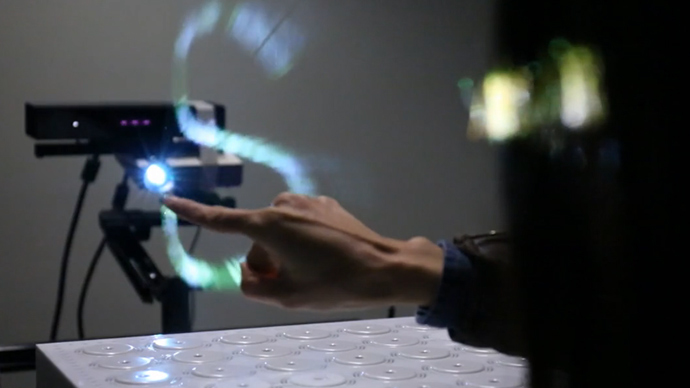Digital drawing: Novel holographic device allows mid-air index finger artistry

Hong Kong scientists have come up with an incredible invention – an interactive 3D fog display that plucks full-color holographic images out of thin air.
Holograms allow you to draw in midair without using any kind of special equipment – just your own forefinger.
High-resolution images can be viewed from various angles by many people at the same time. The fog itself is invisible, but you don’t need special glasses or any kind of head-mounted devices to see the foggy holograms.
“The prototype consists of a 2D array of fog emitters that are individually switchable. The switching pattern is controlled by a microcontroller and custom electronics,” explains the narrator of a short documentary about the novel invention.
Interactive 3D Fog Display from miu on Vimeo.
“Columns of laminar fog would form a non-planar immaterial screen which scatters the light that is projected onto it,” he added.
“It’s like the world opened up this huge candy store for us and half the people are just standing in line at the gumball machine,” a holography fan said upon watching the video.
READ MORE: New app lets you create & share videos with life-size holograms of celebrities
Bin Chen, Yaozhun Huang, and Miu-Ling Lam from the City University of Hong Kong made it possible to draw in mid-air. However, the display won’t properly work outdoors where a gentle breeze may dissipate the layer of fog that’s used as a canvas. Besides, the setup is quite bulky. Still, there’s no reason not to think that one day it will be as compact as a mobile phone and you might fish it out of your pocket to draw a complicated-looking graph or merely a doodle of your mood.
Holography dates from 1947, when British scientist Dennis Gabor developed the theory of holography, for which he was awarded for with the 1971 Nobel Prize. His holograms were flat and monochrome.
READ MORE: Invisible 3D holograms that can be touched and felt
In 1958, Russian scientist Yury Denisyuk invented 3D holography and received the 1970 Lenin Prize.
‘Rainbow’ holography was discovered by Stephen Benton in 1968 and finally, 3D images became full-color.












